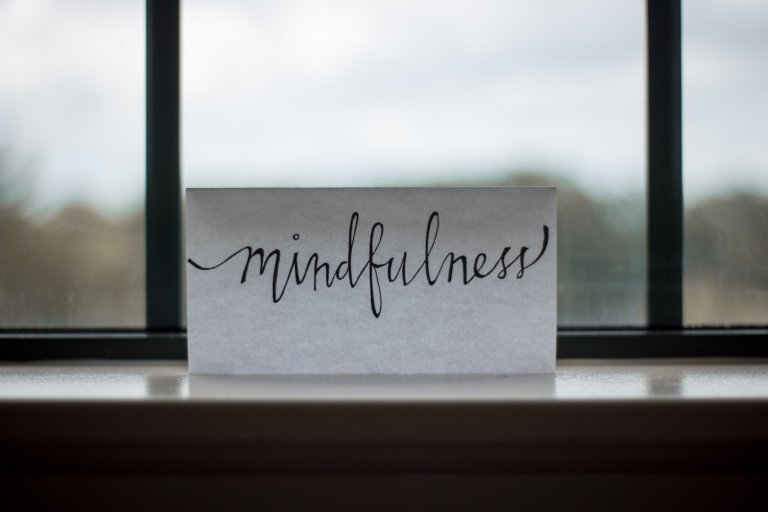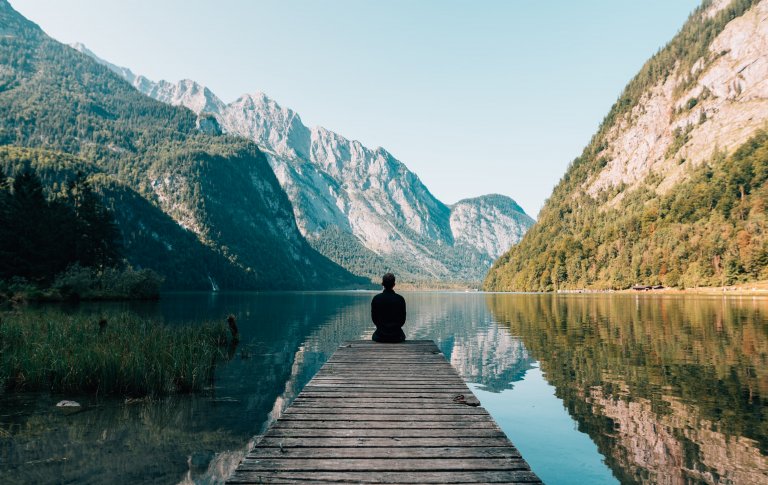I have always been someone with a short attention span. And at the same time deeply interested in all limbs of Yoga. And this was quite a paradox. Ashtang Yoga as the name suggests has eight limbs. Of which five – Asana, Pranayama, Pratyahar, Dharana, Dhyan in that order, require an increasing amount of attention lock-in from the sadhak. However, I wasn’t wired for that.
I experimented with a variety of mindfulness disciplines (Dharana practices) – Soham meditation, Anapanasati and Tratak but fell flat on my face every single time. I also attended a long Vipassana camp but I couldn’t lock in my attention sufficiently to be able to derive much benefit from it. I would be ‘there’ for a few fleeting moments and then I would happily drift away in thought. Only to feel very bad about myself later. I tried this for quite a few years – on and off – but I was hardly making progress. My self-esteem would suffer and I would only end up beating myself up for that psychologically.
What came to my rescue was the Samadhi Abhyasa that I had learnt along the way from my master Guruji Rishi Prabhakar (founder of SSY). Samadhi Abhyasa is one step subtler than awareness, mindfulness and witnessing. In fact in many ways its diametrically opposite to a mindfulness technique. In fact its all about de-focus rather than focus. If you observe, mindfulness or witnessing also involves an element of effort while the Samadhi Practice that I learnt as a part of SSY is all about non-doing. All you do is just ‘be’. There is no place for ‘watching’ either. The closest one finds to the Samadhi Abhyasa is the original Zazen meditation from the Zen tradition.

Samadhi practice immediately struck a chord with somebody like me who couldn’t get himself to adapt to the discipline of mindfulness. I would find myself in deeply blissful states within a matter of minutes. For upwards of a decade, I pursued it on a daily basis. The stillness and contentment it leaves me with has been most profound. While I earlier beat myself up for being too distracted, now in retrospect, I feel I am blessed. Owing to a poor threshold for the frustration induced by failed mindfulness experiments, I landed up in a technique that directly lands one in the transcendental space (the Turiya avastha that’s beyond the mind) in a matter of 3-4 minutes. This was the best part – that it’s at least a dozen times faster than anything else i had come across.
Second thing that came to my rescue is the teachings of no-mind from Zen and Taoism. I realised that both Zen and Taoism had a more direct approach to meditation. You can bypass all forms of ritualistic disciplines and operate from (and thereby abide in) the source without any discipline whatsoever (Mo Chih Chu). The purpose of mindfulness is also so that it culminates in no-mind. The Taoist prefers the direct route. Taoism nudged me to operate from the no-mind (also called the unborn mind) rather than do anything in particular to still the mind. It was my deep dive into the work of Alan Watts and Osho’s commentaries on Taoism that helped me discover this art. I started combining the Samadhi ritual with Taoistic no-mind.
Operating from no-mind requires you to operate from a place that’s beyond any form of distinctions or polarities. Operating from no-mind requires you to get in touch with the seat of spontaneity (sahaja) within you thats beyond the opposites. And as you operate more and more this way, you generate a certain momentum that only adds more and more freshness and delight to your life. There is a place for mindfulness practices for those who are wired for that. I personally know quite a few who have benefited from it. However, a defocusing practice like the Samadhi Abhyasa and operating from no-mind is to my mind a far easier and far more expeditious alternative.
Sometime in 2011, I came across the legendary father of breathwork Leonard Orr and allowed myself to soak in deep emotional cleansing through Rebirthing Breathwork and spiritual purification with the five elements of Earth, Air, Water, Fire and Space. I also participated in a month-long full-time dip into this regimen with Leonard Orr himself at Virginia, USA. Little did I know that this emotional detox was paving the way for still higher avenues.

In late 2017, I fell upon yet another higher level of meditations. I had concluded few years back that the non-conceptual and no-effort meditations like Samadhi Abhyasa were higher than the conceptual ones and those that involved contrived practice. I was happily jolted out of that conclusion as I fell upon my current master Dr Baskaran Pillai who is a fully enlightened Tamil Siddha. Besides, a deep dive into India’s highest spiritual tradition ever – Kashmir Shaivism – made me realise that spiritual transmissions from an enlightened master transfers mystical prana (ecstatic conductivity) directly from one soul seat to another, leading to a permanent irreversible jump in consciousness with every instance of practice. I found opening myself to these direct transmissions to be deeper than anything else that I had practised till date. Ever since, I have been practising Dr. Pillai’s profound Shakti-infused and mantra-charged guided meditations more than any other spiritual practice and this keeps my mind free of clutter, the body full of prana and the spirit full of enthusiasm. I am endeavouring to master this inner climate better and better with every passing day.
In a nut-shell, Vipassana, Tratak, Samadhi Abhyasa, Mo Chih Chu, Rebirthing Breath-work and Shaktipat has been my personal ladder of progression in the area of meditative practice. Hope my sharing of my rigorous experimentation with these varieties of meditation helps you find your sweet spot in this area too. God Bless.
